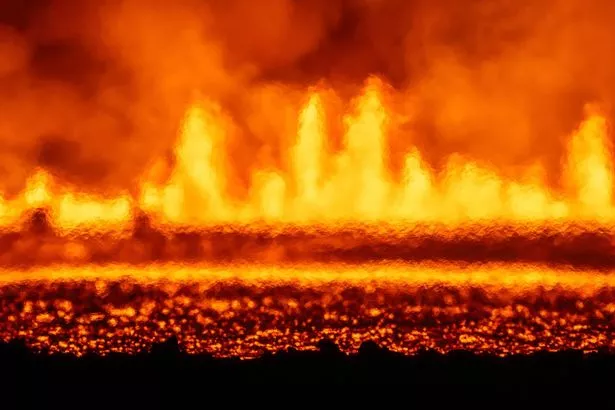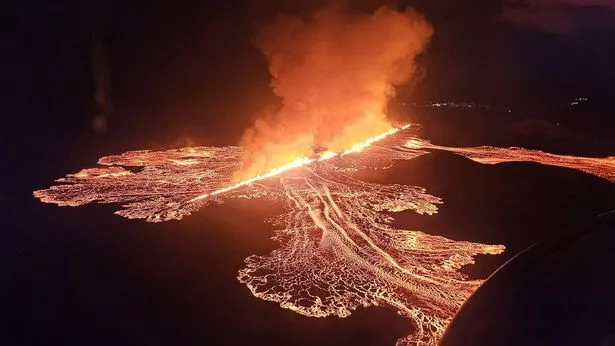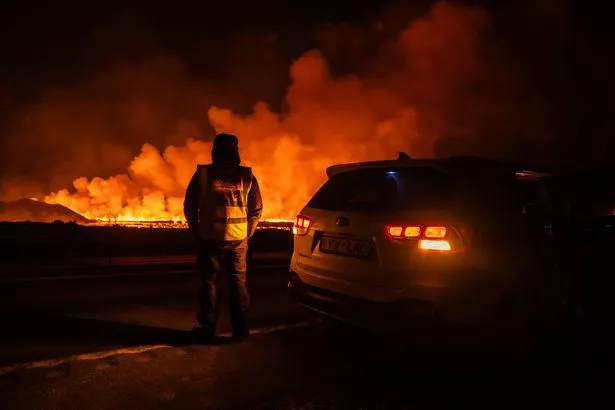Lava can be seen spewing high into the sky with a volcano erupting in Iceland causing tourist evacuations.
The volcano on the Reykjanes Peninsula in southwestern Iceland has erupted for the seventh time since last December and this time with little warning on Wednesday night.
It started at at 11:14pm and created a fissure around 1.8 miles long. The main danger is from gas emissions, leading to an alert being issued by authorities and evacuations including from the famous Blue Lagoon tourist resort.
The volcanic activity is estimated to be slightly smaller than the previous eruption in August, Iceland’s meteorological office that monitors seismic activity said.
“In the big picture, this is a bit smaller than the last eruption, and the eruption that occurred in May,” Magnús Tumi Guðmundsson, a professor of geophysics who flew over the scene with the Civil Protection agency to monitor the event, told the national RUV broadcaster.

(
AP)
While the eruption poses no threat to air travel, authorities warned of gas emissions across parts of the peninsula, including the nearby town of Grindavík. Around 50 houses were evacuated after the Civil Protection agency issued the alert, along with guests at the Blue Lagoon spa, according to RUV.

(
Anadolu via Getty Images)
The repeated volcanic eruptions close to Grindavík, which is about 30 miles southwest of the capital, Reykjavik, and has a population of 3,800 people, have damaged infrastructure and property and forced many residents to relocate to guarantee their safety. “Grindavík is not in danger as it looks and it is unlikely that this crack will get any longer, although nothing can be ruled out,” Magnús Tumi said.

(
AP)
Iceland, which sits above a volcanic hot spot in the North Atlantic, averages one eruption every four to five years. The most disruptive in recent times was the 2010 eruption of the Eyjafjallajokull volcano, which spewed clouds of ash into the atmosphere and disrupted trans-Atlantic air travel for months.

(
AP)
Grindavik Mayor Fannar Jónasson said the latest eruption has come as a big shock although he added: “But that is how unpredictable nature is.” The eruption was not expected for another few weeks and now the volcano lava flow is heading to the westwards. Benedikt Ófeigsson from the Norwegian Meteorological Agency told local media Channel 2: “There is currently nothing in danger, and if this does not develop much differently than it has been doing, the infrastructure should escape this quite well.”
This post was originally published on here







